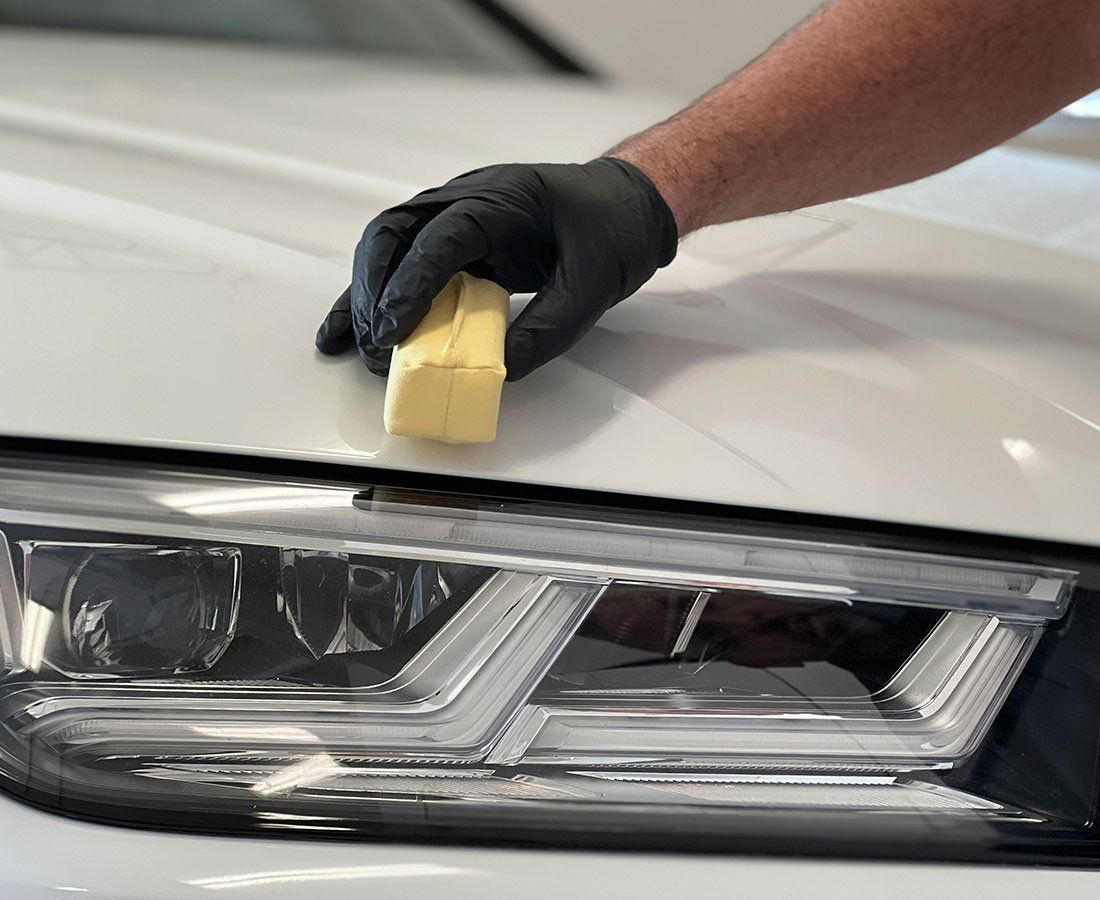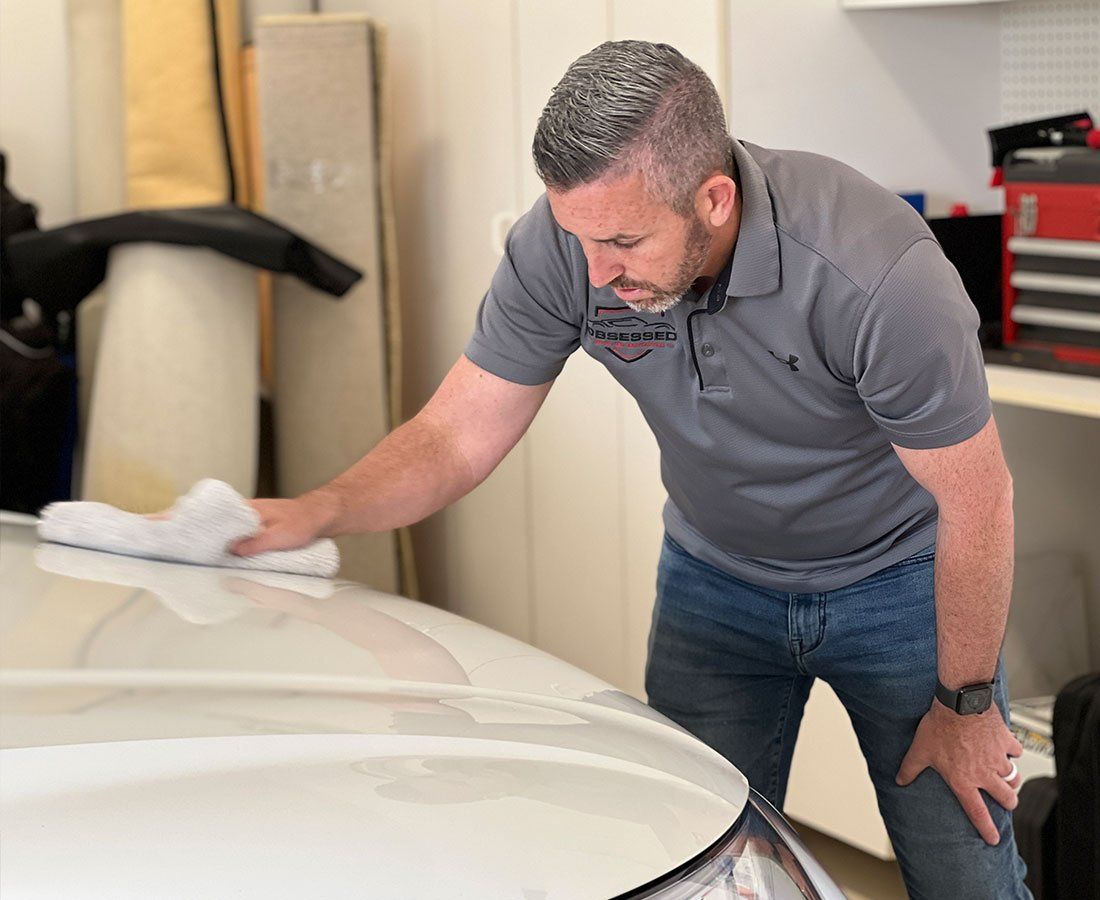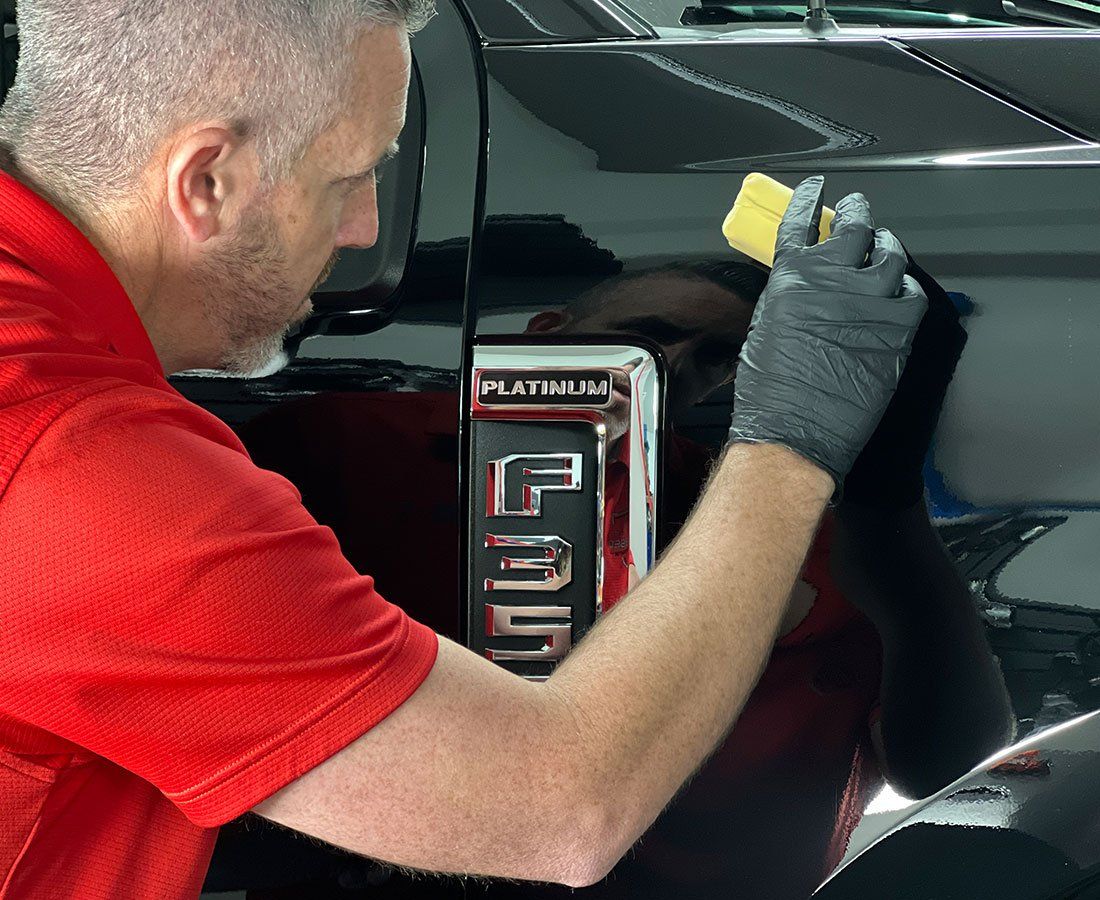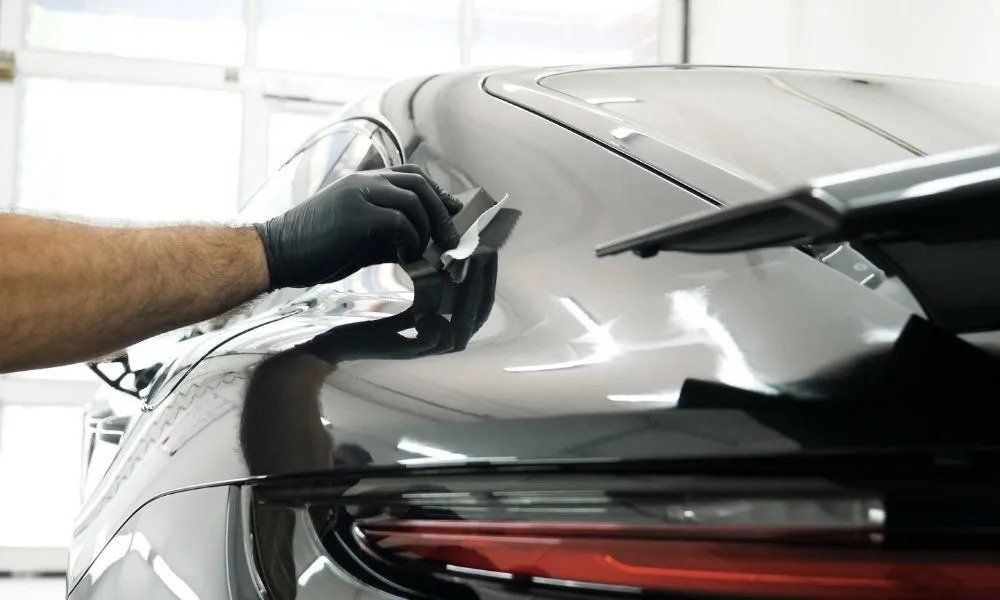The Long-Term Value of Ceramic Coating vs. Traditional Wax: A Comprehensive Comparison for Car Protection
Ceramic coating, a cutting-edge liquid polymer, secures an enduring bond with your car's paint, promising powerful defense. Unlike the fleeting shield granted by the blend of natural wax and oils in traditional wax, which gives out after some time, ceramic coatings earn their repute for extraordinary toughness against harsh outdoor factors. Picture this—despite bearing the brunt of scorching sun or bitter cold, the luster of your car's surface remains untouched with ceramic coating, like a superhero who never loses his shine no matter how tough the fight. It is then time to prepare for the next chapter in car protection.
Ceramic coatings offer superior longevity, providing extended protection against environmental contaminants, UV rays, and harsh detergents compared to traditional wax. Additionally, ceramic coatings require less frequent reapplication, making them a cost-effective choice for long-term car care.
Ceramic Coating and Traditional Wax Explained
Ceramic coatings are like a force field for your car's paint, forming a chemical bond that is much more durable than traditional wax. Think of it as a high-tech shield that offers an unprecedented level of protection for your vehicle's surface. On the other hand, traditional wax creates a temporary barrier that provides shine and some protection, albeit with a shorter lifespan compared to ceramic coatings.
It's important to understand that ceramic coatings are not just a stronger version of wax; they're a whole new category of paint protection. This liquid polymer solution is engineered to withstand harsh environmental factors such as UV rays, acid rain, bird droppings, and even light scratches, ensuring your car retains its glossy finish for an extended period of time. In contrast, traditional wax primarily aims to enhance the appearance of the vehicle by providing a warm, glossy finish for a limited duration.
FUN FACT: While wax could be likened to an old, winding road in terms of performance and durability, ceramic coatings could be compared to a modern expressway.
To put things into perspective, imagine wax as a shield made of wood—effective in the short term but vulnerable to wear and tear. On the other hand, ceramic coatings are akin to having a shield made of steel—long-lasting and resilient against all manner of attacks. This comparison illustrates the significant disparity in protective capabilities between the two materials.
Another important distinction between ceramic coatings and wax lies in their application method. Wax typically requires reapplication every 4–6 weeks for general-use cars, while ceramic coatings provide 3–4 months of protection or even years, depending on the type chosen. Moreover, the durability of these protective measures may vary based on storage conditions and environmental factors.
Evaluating Long-Term Perks of Ceramic Coating
When it comes to car care, you want a solution that lasts. Ceramic coatings are designed to provide long-lasting protection for your vehicle's exterior. Their incredible durability and longevity set them apart from traditional waxes, which typically last only a couple of months at most. Once you apply a ceramic coating to your car, frequent reapplications become unnecessary, saving you time and effort in the long run.
Moreover, the extended lifespan of ceramic coatings translates to greater cost-effectiveness over time. While the initial application cost may be higher compared to traditional wax, the prolonged protection more than compensates for it. It becomes clear that ceramic coatings are a wise investment for maintaining your vehicle's appearance when you consider the years of protection they provide.
Thanks to this advantageous longevity, you can enjoy peace of mind knowing that your car's paint is shielded from various external threats without the need for frequent reapplications.
Another advantage of ceramic coatings is their superior ability to protect your car's paint from harm from UV rays, environmental contaminants, and harsh detergents. The robust resistance they offer ensures that your car's exterior maintains its radiant finish over an extended period of time. Consider the impact of UV rays on your car's paint. Ceramic coatings act as a barrier against these harmful effects, preserving the color and finish of your vehicle's paintwork for a longer duration compared to traditional wax.
In addition, ceramic coatings mitigate the risks of paint oxidation and degradation due to environmental pollutants and contaminants. By creating a protective layer on the surface of the car, ceramic coatings act as a shield against these harmful elements, maintaining the integrity of your vehicle's paintwork over time. By maintaining your car's pristine condition, ceramic coatings' extended protection not only improves its aesthetic appeal but also increases its overall resale value. With these long-term benefits in mind, it becomes evident that ceramic coatings offer a compelling solution for maintaining and safeguarding your vehicle for years to come.
Understanding Traditional Wax Longevity
When it comes to car care, traditional wax is like the older sibling of ceramic coating. It has been the go-to method for ages and is still widely used today because it's easy to apply and can provide a nice shine. However, the downside is that it doesn't last very long—usually only around 4 to 6 weeks. Environmental factors, like sun exposure and rain, as well as where the vehicle is parked (indoors or outdoors), can have a big impact on how long it actually lasts.
For example, if you live in an area with intense sun exposure or frequent rain, the wax may wear off more quickly than if you lived in an area with mild weather conditions. Similarly, if your car spends a lot of time parked outside in harsh conditions rather than in a covered garage, the wax will degrade faster.
Apart from environmental aspects, how frequently you drive and how often you wash your car can also influence the longevity of traditional wax. The protective layer that wax creates can degrade when exposed to pollutants, bird droppings, tree sap, and other contaminants. So, even though wax provides a glossy finish for a period of time, it requires regular maintenance to uphold its protective properties.
Imagine wax as a sealant on top of your car’s paint. Over time, this sealant wears thin due to various environmental and usage factors, leaving your car's surfaces vulnerable to damage. Using traditional wax means regularly applying and reapplying it every few weeks to maintain that protective layer on your car. This not only takes up more time but also becomes an ongoing expense when considering the cost of wax and the frequency of reapplication.
Considering all these factors influencing wax longevity helps us understand that despite its initial glossy finish and ease of application, traditional wax demands regular upkeep for optimal protection—a stark comparison to ceramic coatings that provide lasting protection with minimal hassle.
Protection and Durability: A Comparison
When it comes to safeguarding your car's paint job, durability and resilience are imperative. Ceramic coatings provide an impressive level of protection by forming a semi-permanent bond with the paint, ensuring long-lasting defense against various environmental aggressors, including UV rays, harsh detergents, and even water. This robust shield acts as a barrier, safeguarding your vehicle's exterior and helping to maintain its original luster over time.
In contrast, traditional wax offers a sacrificial layer of protection. While it can provide a glossy finish and some degree of defense against contaminants for a short period of time, it lacks the lasting resilience of ceramic coatings. Over time, wax breaks down and needs frequent reapplication, leaving your vehicle vulnerable to the elements between treatments. To put it simply, applying wax to your car is like wearing a raincoat that needs replacing every few weeks, whereas ceramic coating is akin to a suit of armor that lasts for years.
Furthermore, ceramic coatings exhibit exceptional resistance to heat, which is particularly important for cars exposed to high temperatures in sunny climates. The additional depth they lend to the paint also enhances the vehicle’s overall appearance.
On the other hand, while wax can add some depth initially, it doesn't offer the same long-term enhancement and can be easily worn away by exposure to the sun's UV rays and other harsh elements.
Ceramic coatings outshine traditional wax due to their lasting bonding properties and exceptional resistance to environmental aggressors. The difference in longevity and resilience ensures that your vehicle maintains its aesthetic appeal while receiving comprehensive protection. With these insights in mind, it's clear that investing in ceramic coating for daily drivers exposed to harsh elements is a prudent choice for those looking to safeguard their vehicle's appearance and value over time.
Vehicle Shine and Maintenance Comparison
When it comes to maintaining your car’s shine, there is a noticeable difference between using ceramic coatings and traditional wax. Ceramic coatings have gained popularity for their ability to create a more intense and longer-lasting shine on vehicles when compared to traditional wax. The nano-ceramic particles in these coatings form a protective layer over the paint, resulting in a glossy appearance that can last for years when properly maintained.
One of the key benefits of this heightened shine is that it not only enhances the aesthetic appeal of the vehicle but also acts as a protective barrier against environmental elements. Traditional wax, while initially providing a shiny finish, tends to wear off relatively quickly, leaving the vehicle susceptible to damage from UV rays, oxidation, and other harmful substances.
Think of ceramic coatings as a shield that keeps your car looking like it just came out of the showroom. This means that your car's paintwork is better shielded from fading, etching, or staining brought on by exposure to the sun, rain, bird droppings, tree sap, and other contaminants. The result is a long-lasting gloss that remains intact even with regular use. This means that your car's paintwork is better shielded from fading, etching, or staining brought on by exposure to the sun, rain, bird droppings, tree sap, and other contaminants. This reduces the adhesion of contaminants to the surface of the car, making it much easier to clean. As a result, you won't need to wash your car as frequently as you would with traditional wax.
Reduced washing frequency not only saves time but also minimizes the wear and tear on the vehicle’s paintwork. With ceramic coatings, dirt and grime are less likely to stick stubbornly to the surface, resulting in less effort being required during cleaning. This contributes to a significant reduction in maintenance efforts over time.
On the contrary, traditional wax does not possess the same level of protection against dirt and environmental contaminants. It provides a glossy finish but lacks the durability and resistance offered by ceramic coatings. This means that vehicles treated with traditional wax may require more frequent washing and detailing to maintain their shine and cleanliness.
In conclusion, the enhanced shine that ceramic coatings produce not only improves vehicle visibility but also streamlines maintenance procedures by repelling dirt and grime, thereby lowering overall cleaning frequency and effort.
Cost and Overall Value Assessment
Let's start by acknowledging the reality that the initial cost of applying a ceramic coating to your vehicle is higher than traditional wax or polish. But don't let this deter you just yet! Investing in ceramic coatings pays off not just in terms of car protection but also in the valuable time and effort saved on frequent reapplications and maintenance. While wax often requires reapplication every few months, ceramic coatings can last anywhere from 2 to 10 years, depending on the strength chosen, with warranties available between 2 years and lifetime.
This means considerable savings in both time and money over time. Enjoying long-lasting protection reduces the need for meticulous upkeep, meaning fewer trips to the auto detailer or DIY waxing sessions. This longevity factor is where the true value of ceramic coatings lies—it's like setting up a long-term defense strategy versus having to constantly protect a castle under siege.
Resale Value Consideration
Moreover, it's essential to take into account the enhanced resale value that comes with prolonged protection offered by ceramic coatings. The extended durability and long-lasting shine provided by ceramic coatings can significantly improve the overall look of your car, increasing its appeal to potential buyers when it comes time to sell or trade it in.
Consider this: When shopping for a used car, wouldn't you be more inclined to choose the one with better paint condition and protection? The premium appearance and protection offered by ceramic coatings can offer a competitive edge when it comes to negotiating a fair price for your vehicle since potential buyers are likely to be willing to pay more for a car that looks newer and is better protected against wear and tear.
Cost-Benefit Analysis
Now, let's talk numbers. Traditional wax might appear more affordable at first glance, especially if its lower initial application cost draws you in, but it's important to take the big picture into account. The regularity of wax reapplications adds up; multiply those costs over several years, not to mention any potential damage or deterioration that occurs in between reapplications.
On the other hand, investing upfront in a quality ceramic coating entails reduced expenses in the long run. The pricier upfront investment pays off through substantial savings on product replenishment and maintenance requirements over time. This means you are not only preserving your vehicle but also safeguarding your wallet from the continuous product expenditures associated with traditional wax applications.
By considering these factors, it becomes evident that while ceramic coatings may require a larger upfront investment, their extended durability and protective benefits ultimately contribute significantly to their overall value proposition compared to traditional waxes.
It's undeniably clear that the allure of ceramic coatings goes well beyond their initial application cost, providing long-term protection, saving time and money, enhancing resale value, and offering an overall more cost-effective solution for maintaining your car's pristine appearance.
Obsessed Detail and Restoration: Superior Ceramic Coating Specialist in Draper, UT
Ready to give your car the ultimate armor against dirt, grime, and the elements? Look no further than Obsessed Detail and Restoration, your premier ceramic coating specialist in Draper, UT. Our expert team is dedicated to providing superior protection for your vehicle's paint, ensuring a long-lasting, showroom-worthy shine. With our advanced ceramic coating solutions, your car will repel water, resist scratches, and maintain its glossy finish for years to come. Don't settle for anything less than the best; visit Obsessed Detail and Restoration today and experience the difference for yourself!






